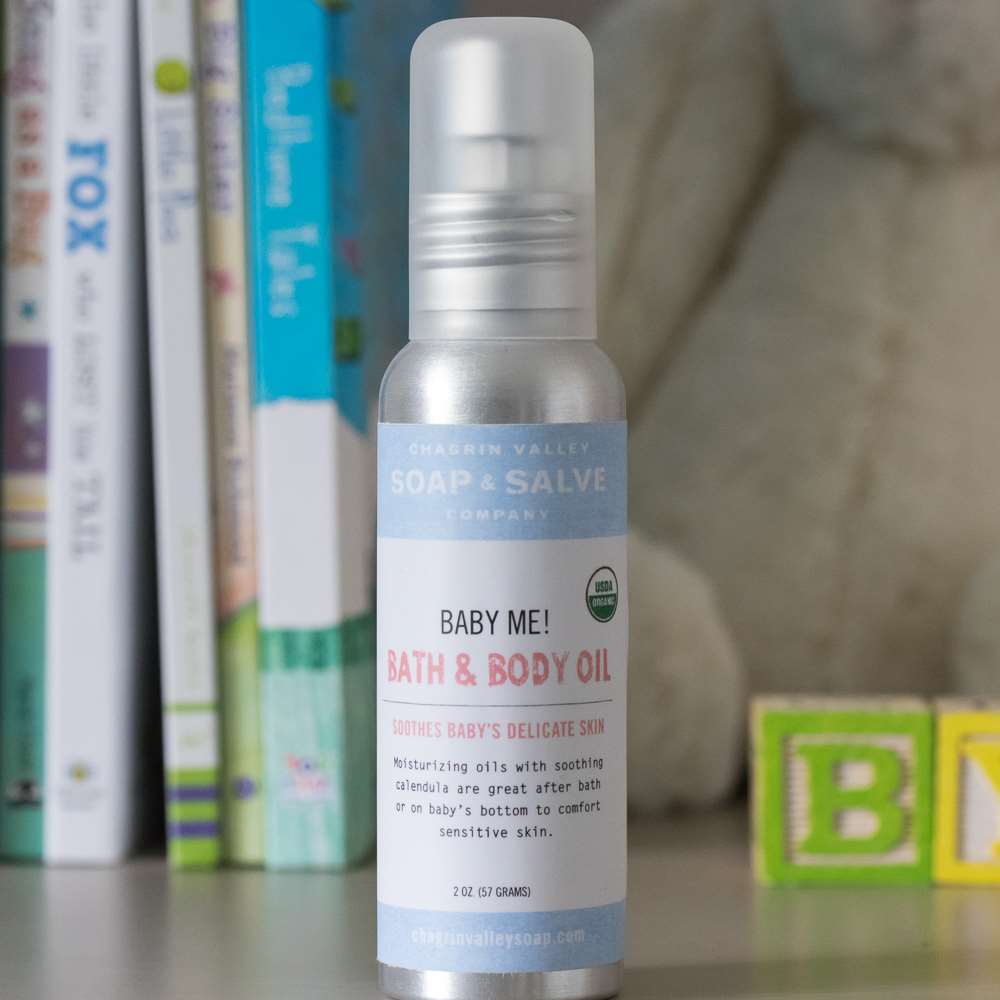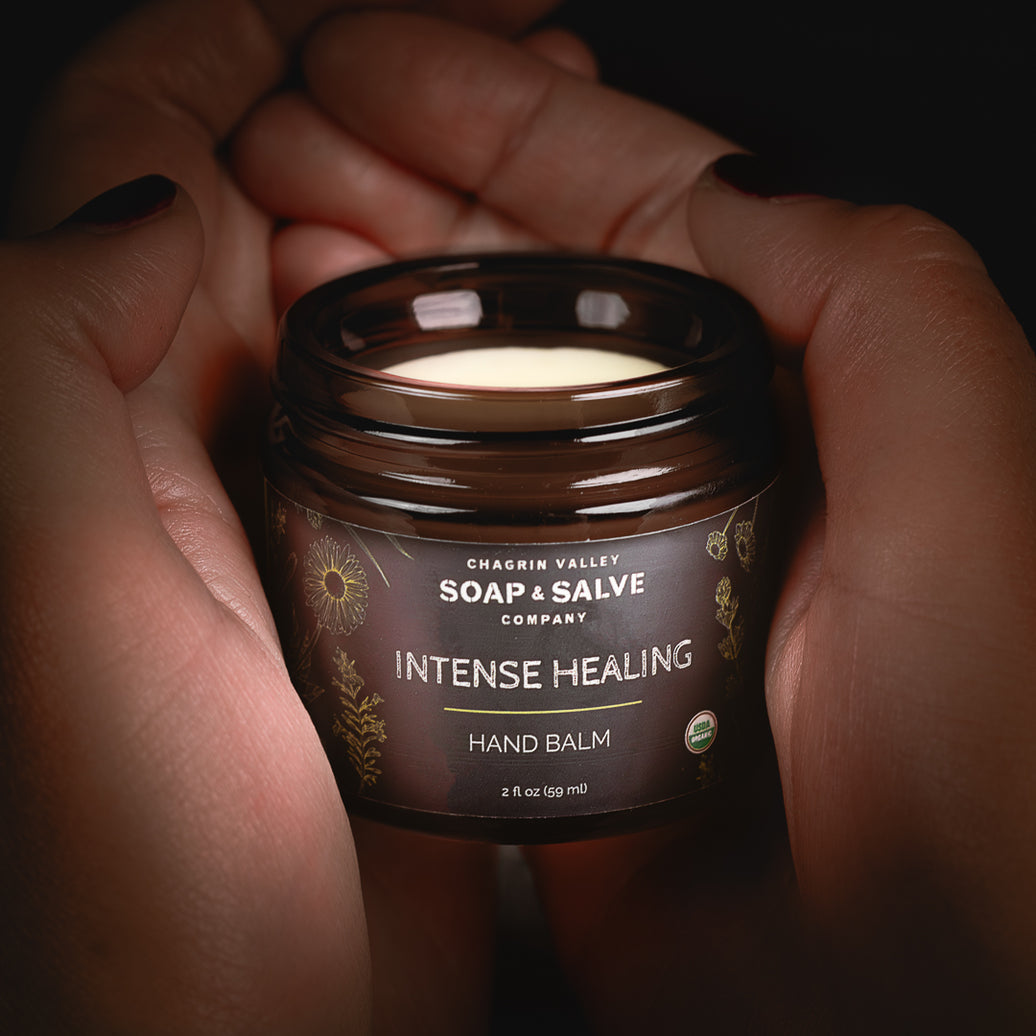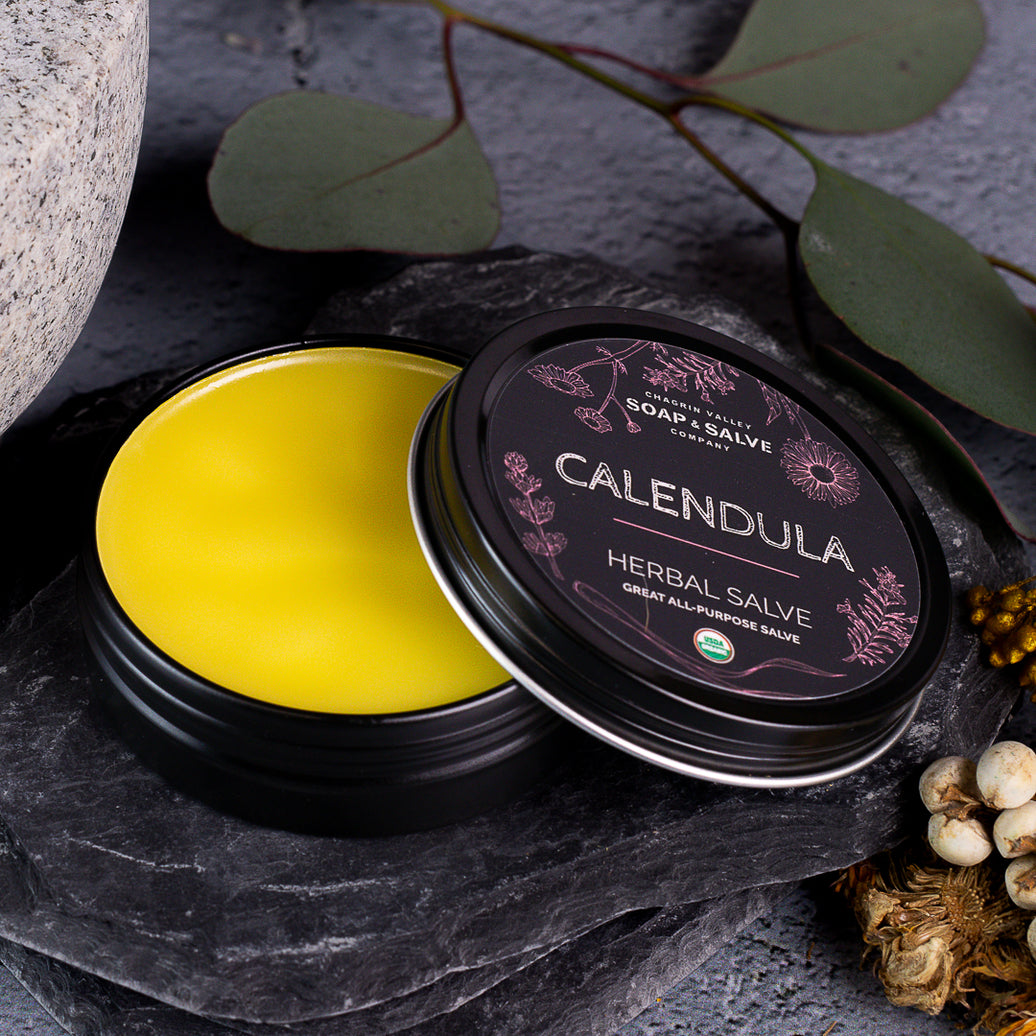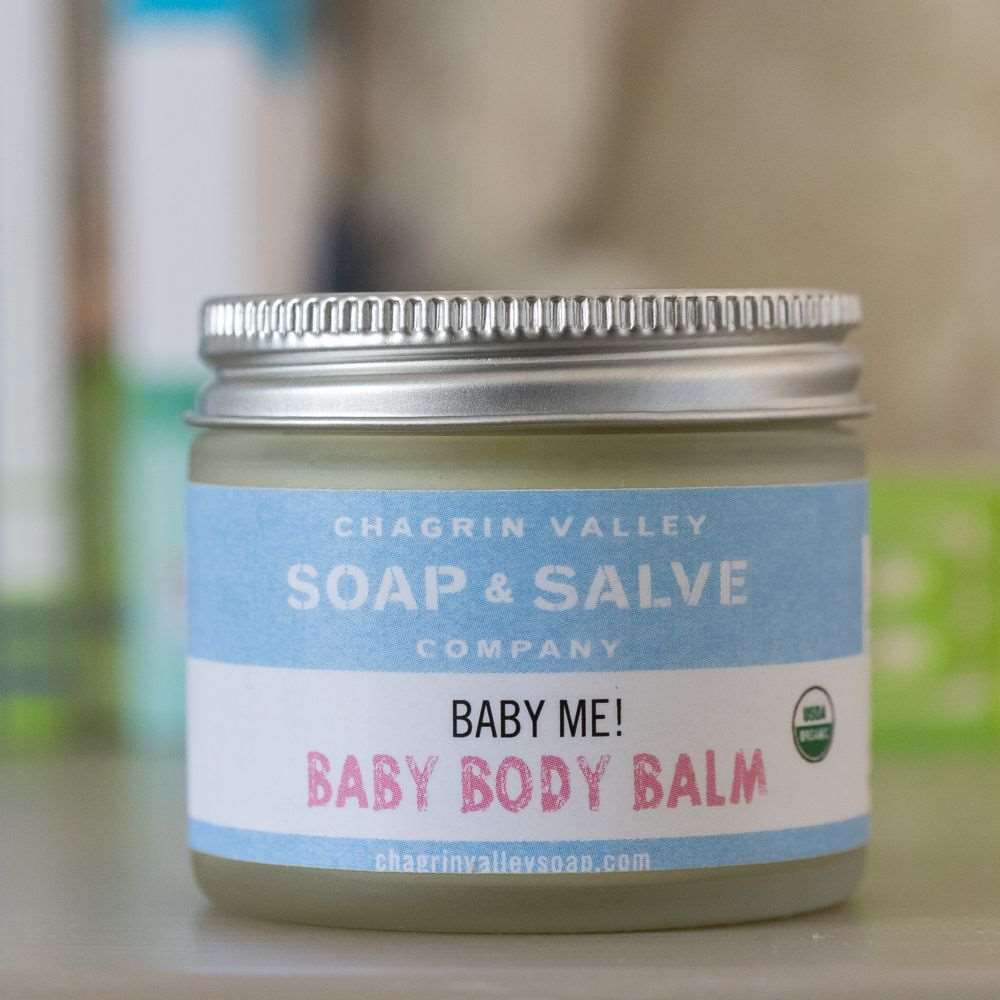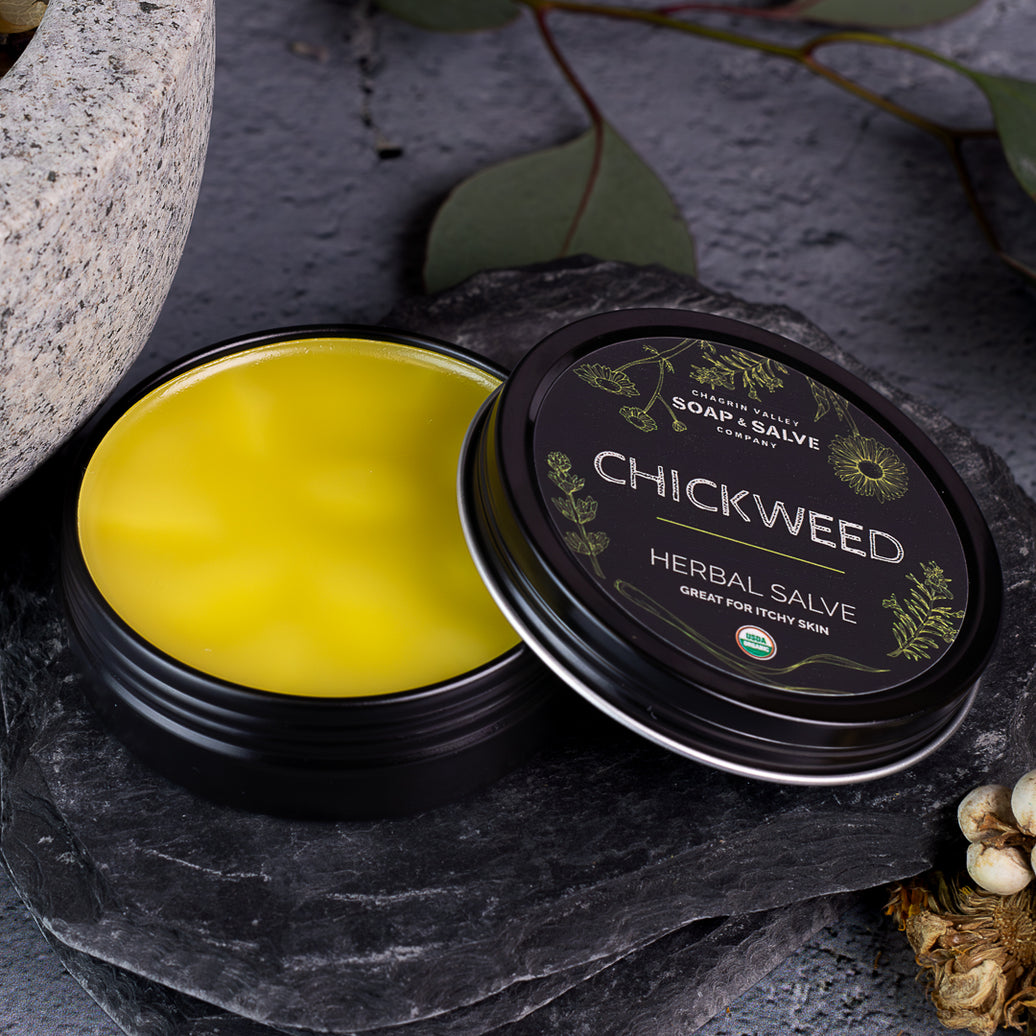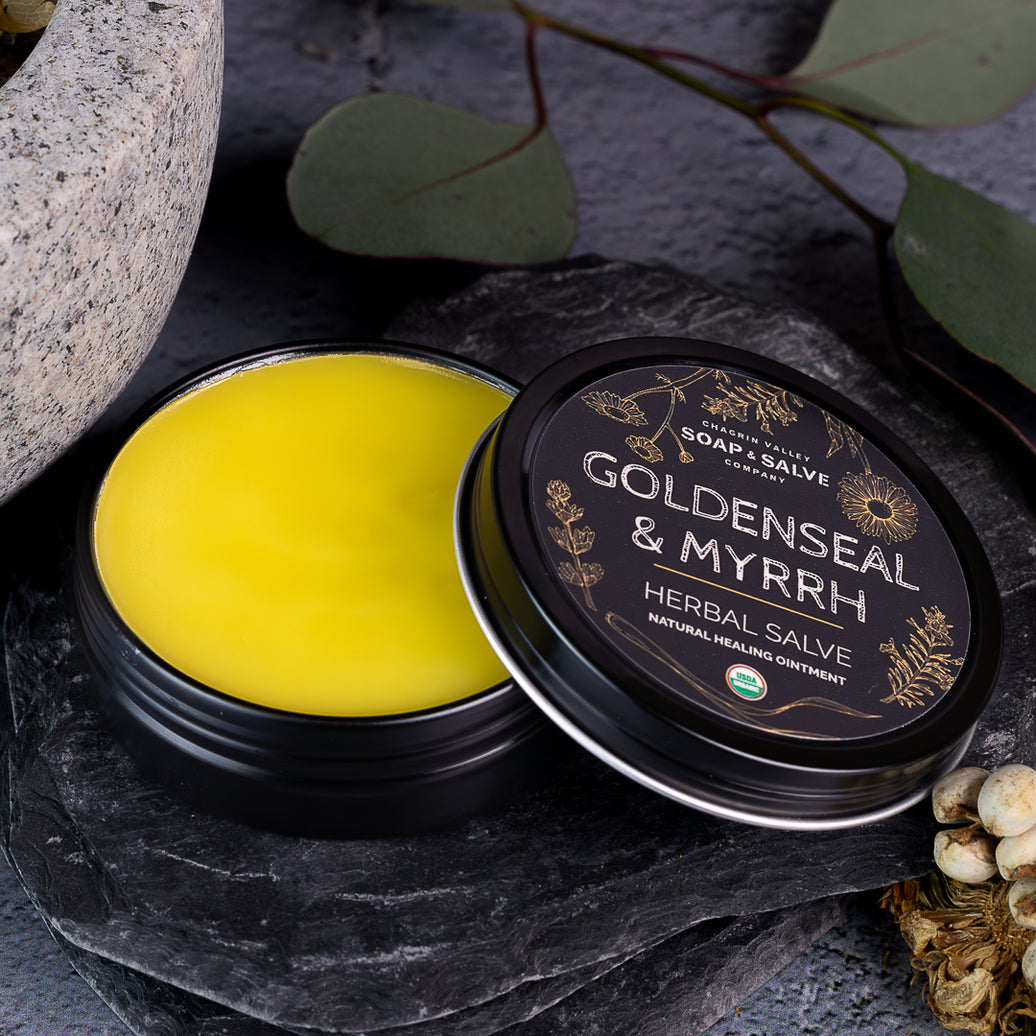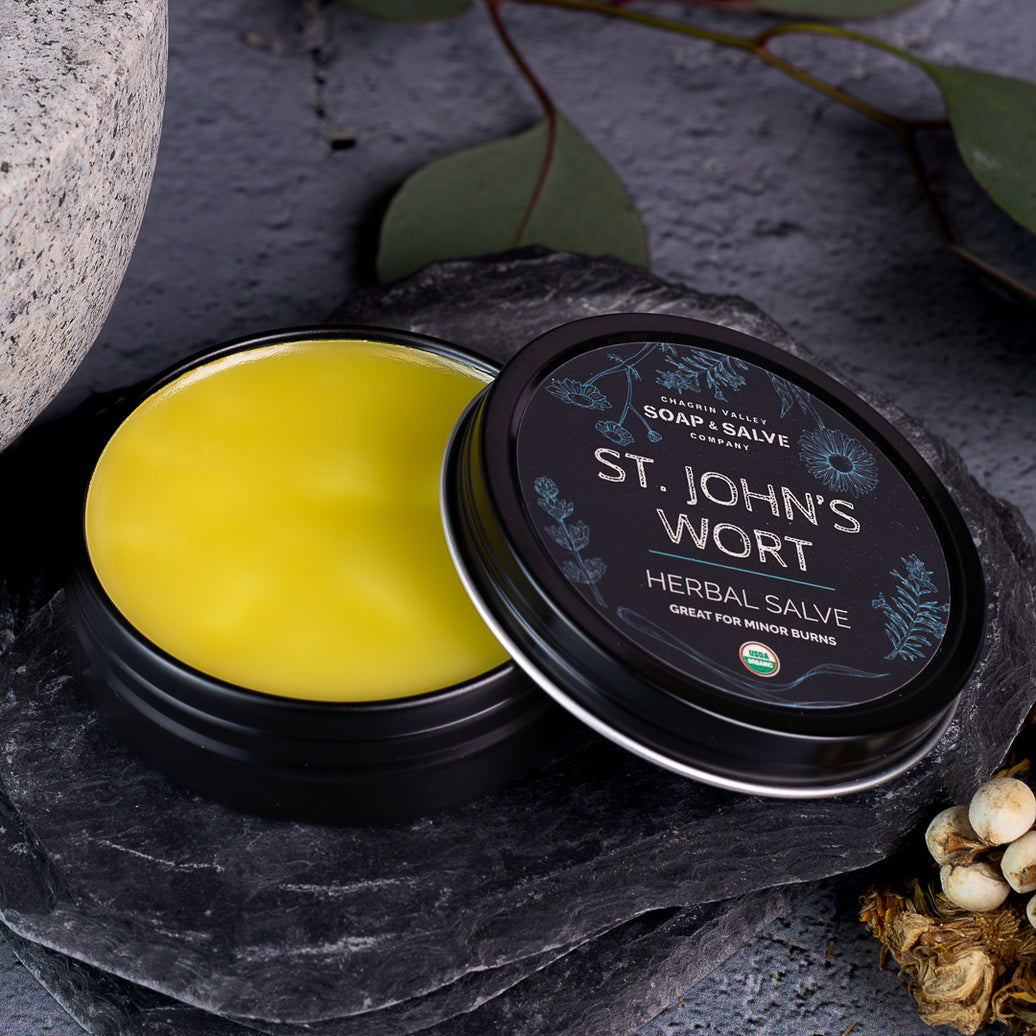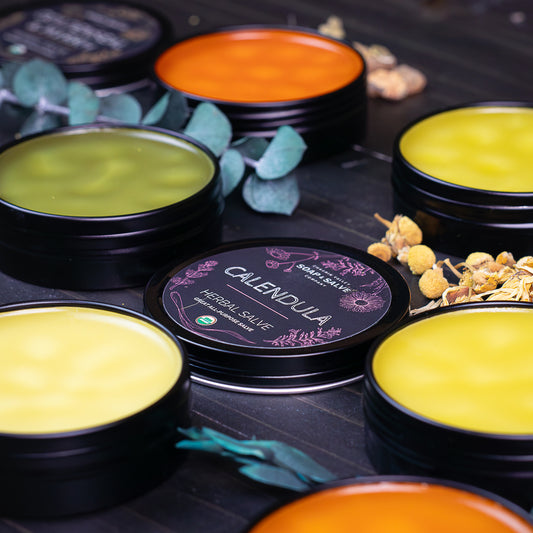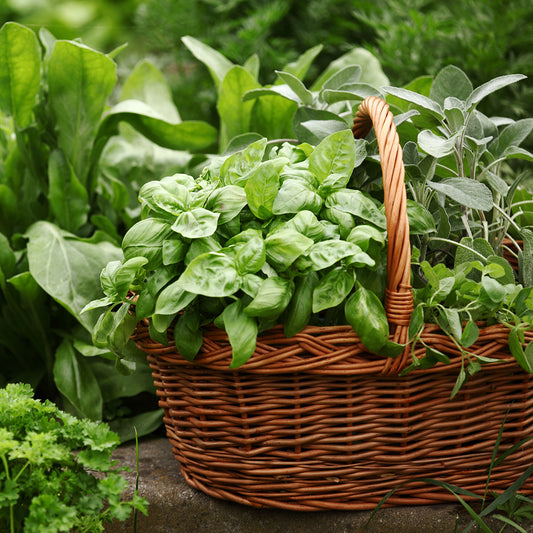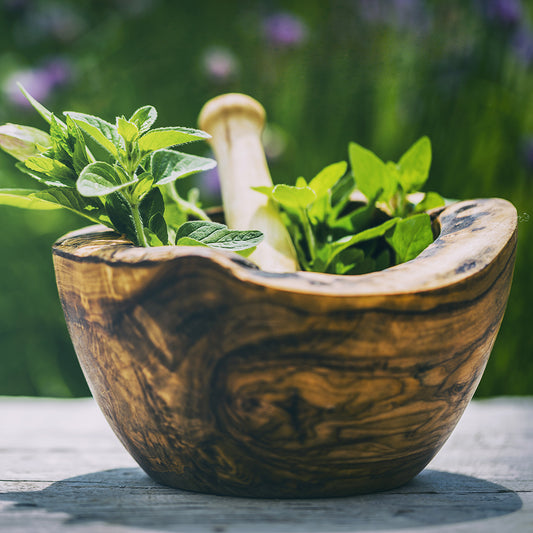How To Make Herbal Oils for Skin or Hair Care
Our SKIN, remarkably thin and amazingly complex, cannot discriminate between synthetic and natural, or between harmful and beneficial.
How did we care for our skin before the creation of commercial skin care products made with synthetic ingredients?
We looked to nature!

The ancient Egyptians were the first to record the use of infused oils. For centuries healing herbs and botanicals have been used to support healthy skin, enhance the skin’s appearance, treat skin problems, and improve skin quality.
Every day our skin acts as a barrier between us and the outside world.
Our skin is our first line of defense against the outdoor elements like air pollution as well as other chemicals that touch our skin in laundry detergents, personal care products, and even swimming pools.
Why use synthetic chemicals on our skin when Mother Earth supplies us with just about everything we need to formulate wholesome, high-quality, effective soaps, healing salves, hair, and skin care products?
Botanical infused oils are used in so many of our skin care products.
Plants with their many complex natural "active ingredients" have a life force of their own. Herbal oil infusions harness the power of plants. They draw out the therapeutic properties of plants and offer skin the benefits of the nourishing carrier oil as well as the plant itself.
To take a plant and turn it into something that can soothe skin and support healing is magical. I love using whole natural plant material instead of extracts to formulate skin and hair care products. When plants are used in their whole, unadulterated form, the natural goodness is preserved. Our bodies, which are part of the natural world, can more easily recognize and absorb the benefits.
We believe that isolates and extracts can not capture the natural synergistic properties of whole plant ingredients. Once we start extracting single compounds we alter the natural synergy that plants have to offer.
We all want healthy-looking skin. Natural herbs and botanicals are a wonderful addition to any skin care regimen because they rely on their natural therapeutic properties, not synthetic chemicals.
Our motto about our skin care products really says it all:
Harnessing the Power & Simplicity of Nature®
What is an Herb?
The Oxford English Dictionary’s definition of an herb is
“a seed-producing annual, biennial or perennial that does not develop persistent woody tissue but dies down at the end of a growing season. They are plants or plant parts that are valued for their medicinal, savory, or aromatic qualities.”
In the culinary world, the term "herb" usually refers to the leafy green parts of a plant. Other parts, including seeds, berries, bark, root, and fruit, are generally called spices.
In medicinal use, many of the plant's parts might be considered "herbs", including leaves, roots, flowers, seeds, resin, bark, and even berries.
At Chagrin Valley Soap and Salve, our goal is to create wholesome natural products, inspired by traditional and contemporary herbal wisdom.
What Is Herb-Infused Oil?
Slowly steeping herbs into oil transfers the healing properties, scent, and color to the oil and is one of the oldest forms of medicine-making. As the herbs infuse, beneficial compounds, fatty acids, and natural essential oils are drawn out of the herbs and into the carrier oil.
When the plant material is strained a wonderful medicinal herbal oil remains. The oil acts as a carrier for the volatile plant oils allowing them to be more easily absorbed by the skin. We use variety of carrier oils for our herbal infusions, such as:
- Extra Virgin Olive oil
- Almond oil
- Jojoba oil
- Avocado Oil
- Sunflower oil
- Coconut Oil (solid at room temperature)
There are many plant oils that can be used and the choice is yours. Keep in mind that every oil provides different benefits--so do some research. We always suggest using certified organic cold-processed and unrefined oils since they retain their natural scent, color, and nutritional benefits. To gain extra healing and moisturizing benefits I often use more than one type of oil in the same herbal infusion.
Although they are called “herbal oils,” remember that in medicinal use, many of the plant's parts are considered "herbs" including leaves, stems, roots, flowers, seeds, resin, bark, berries, and even botanical fruit. For example, rosehips are the fruit of the rose plant.
Are Herbal Oils the Same as Essential Oils?
The answer is no! Powerfully fragrant and concentrated, essential oils are the pure natural aromatic components extracted from a variety of aromatic plant materials through a distillation process. Essential oils must always be diluted in a carrier oil before use on the body.
An herbal oil infusion extracts material from the whole plant, not just the aromatic components. They are safe to use undiluted directly on the skin.
How To Find Herbs For Herbal Infusions?
Try growing your own herbs in a small garden, in outdoor pots, or even on a windowsill and then dry them.

You can also purchase organic dried herbs from a reputable supplier.
It makes no sense to create a healing oil with herbs that have been sprayed with pesticides.
When purchasing dried herbs it is important to look for companies that have a good reputation and demonstrate knowledge about the plant material they sell. In this case "you get what you pay for" is often very true.
If you find a company selling a normally "expensive" herb for a cheap price it is probably being cut with cheaper herbs.
Companies that purchase and store large quantities of herbs for long periods of time with a short turnover rate often sell herbs that are old, irradiated or fumigated which can seriously jeopardize the bioavailabilty of the plant.
The company should also have an environmental commitment for sustainable harvesting policy and all plant material should be dated to help you monitor shelf life.
How To Choose The Right Herbs
It is very important to become familiar with the properties, benefits, and possible side effects of the herbs (and oils) you choose to use. Be sure to do your research!
FIRST:
Decide what goal are you are trying to achieve with your herbal preparation. For example:
For the Body: relaxation, joint relief, muscle soreness, congestion
For the Skin: soothing, moisturizing, irritated skin conditions, acne, dry or oily skin, sensitive skin, maturing skin
For the Hair: dandruff/irritated scalp, tangles, hair loss, dry or oily hair, color enhancement
SECOND:
Once you know the goal, use those keywords to research and find herbs that will provide the properties you desire. Although the benefits of herbs have been passed down for generations, science has now been able to isolate many of the therapeutic properties of whole herbs by extracting and analyzing their components. You can create unique combinations of herbs and infuse them all together.
Basic Herbal Properties for Skin Care:
Emollient: Herbs with emollient properties soften, soothe, condition and protect the skin. These herbs have a high content of mucilage, a complex mixture of polysaccharides that become gelatinous when mixed with water. Mucilage, particularly good on sensitive areas, gives skin a silky feel and attracts and retains moisture. In hair care mucilage coats and softens the hair shaft and provides slip for detangling. Marshmallow and Burdock roots and Plantain are rich in mucilage.
Soothing: For sensitive skin, we look for herbs that are healing and soothing due to their anti-inflammatory properties. Calendula, Chamomile, Mullein, Plantain, and Lavender are good examples.
 Healing: Many herbs have healing properties due to their antibacterial, antiviral and anti-inflammatory properties. Black Walnut, Calendula, Comfrey, Goldenseal, Helichrysum, Lavender, Mullein, Plantain, St John's Wort, and Thyme are great healing herbs.
Healing: Many herbs have healing properties due to their antibacterial, antiviral and anti-inflammatory properties. Black Walnut, Calendula, Comfrey, Goldenseal, Helichrysum, Lavender, Mullein, Plantain, St John's Wort, and Thyme are great healing herbs.
Astringents: Astringents cleanse the skin, tighten pores and can even help reduce acne by controlling oils and removing impurities that usually lead to breakouts. They are great for problem skin. Although over-the-counter astringents often contain alcohol, we can get great astringent properties from herbs like Thyme, Lemongrass, Strawberry Leaf, Elder Flowers, Dandelion, and Sage.
Stimulating: Stimulating circulation helps with dry skin mature skin, musculoskeletal aches, and even scalp problems. Arnica, Basil, Cayenne, Chamomile, Fenugreek, Horsetail, Nettle, Lavender, Parsley, Rosemary, and Peppermint are good stimulating herbs.
Toning: Skin toners are mild products that help firm, tighten and hydrate skin. Toners are great for dry skin and aging skin too. Some herbal examples are Basil, Lemon Balm, Thyme, Elder Flowers, Strawberry Leaf, Juniper Berries, Rose Petals, and Yarrow.
Antioxidants: Topical antioxidants can improve cell function, improve elasticity and help with skin problems, which promotes healthier, youthful-looking skin. Green Tea, Hibiscus, Sage, and Holy Basil are some examples.
Obviously many herbs fit into more than one category. Furthermore, when developing a product for a specific skin condition we use a variety of herbs with a variety of therapeutic properties to achieve the best results.
For example, to create the most effective product for eczema we would use herbs that are soothing, emollient, and have anti-inflammatory properties. Then we also add herbs to help soothe itchiness that comes with irritated skin conditions.
For more information on herbs for skin care read our blogs: Herbs For Facial Care and Herbs For Hair Care
How To Make an Herbal Infused Oil
Now that you have decided the goal of the oil and chosen the herbs, it is time to make the infusion.
Due to the natural water content of fresh herbs, be sure to use DRIED herbs for infused oils. If there is any moisture present, your herbal oils can turn rancid or grow mold or bacteria. Dried herbs are highly concentrated and result in a more potent infusion. For more information on drying herbs read, How to Harvest and Preserve Fresh & Dried Herbs.
There are many ways to make herb-infused oils. Your method can be as simple as putting herbs in a jar, covering them with oil and allowing them sit for hours, weeks, or months. The time will depend on the infusion method you choose and how concentrated you would like the infusion to be.
Cold or Solar Herbal Infusion

I am not going to describe methods for cold or solar infusion. While these are old, time-honored folk methods, for many reasons I don't like using either one.
Dried herbs are added to oil, covered, and tucked away in a cabinet or pantry at room temperature for 4 to 6 weeks. To speed up the process, they can also be placed a sunny location, on a windowsill or outside, for 2-3 weeks.
While the sunlight does help encourage the medicinal herbs to release their healing properties, there is some debate as to whether this method encourages the growth of mold, causes oils to go rancid more quickly, or if the sunlight degrades the plant material.
If you would like to use the cold or solar infusion methods there are many references on the internet. Be careful to watch for condensation inside the jar. Especially if oils are placed in a sunny location outside, daily temperature shifts can result in condensation which results in mold formation.
Warm Oil Infusion
The addition of mild heat is an excellent way to get a high-quality herbal oil.
Heat encourages the breakdown of plant material and increases molecular movement in the carrier oil, allowing the healing constituents of the plant to be more easily extracted. This results in a rich, higher quality oil. Heat is definitely the best option for tough plants with thick cell walls or when using roots or stems.
It is best to keep the preparation no warmer than 110-120 degrees Fahrenheit at any given time to best preserve the properties of the plant material as well as the oil. The goal is to very gently warm and not to cook the plants!
For this method, you need to use indirect heat. I personally like the temperature control you achieve with crockpot but you can also use a double boiler.
Crockpot method: While a crockpot is easy and will work quite well, they can often get too hot even on the lowest setting. You will have to experiment with your own crockpot since temperatures vary quite a bit.
It is a good idea to use a thermometer to check the temperature.
Some people like to use the crockpot as a water bath. After the crockpot is filled with water (about 1/4 to 1/3 full), the sealed glass jars with herbs and oil are placed inside. I don't use this type of crockpot method, but there are instructions on the internet.
I like to place the oil directly into the crockpot and add the botanicals as described below.

How much: To make an infused oil with dry herbs you want to use a basic ratio of 1:5. This means about 1 part dry plant material by weight to 5 parts oil by volume.
A simple example would be about 3.5 ounces (100 grams) of plant material to 17 ounces (500 ml) of oil.
Why weigh the herbs? If using a volume measure like cups, 1 cup of dried thyme contains a lot more herbal material than 1 cup of calendula flowers. These oils are quite forgiving, so you can use your best judgement.
- Fill the crockpot with the desired amount of much oil. When making infused oils at home, I don't like straining herbs. I place the dried herbs in a clean old pillow case, muslin bag, or white cotton T-shirt material, tie it up, and place the herbal "bag" in the oil.*
- The herbs are placed oils in the crockpot and set on lowest possible heat. Again, every crockpot is different, the goal is keep the oil temperature between 110-120 degrees Fahrenheit.
- How long to infuse is really personal preference. We suggest at least 2 to 4 hours. A longer infusion time will make a stronger infused oil that more effectively extracts the beneficial properties of the plant material.
- Check the temperature often. You can always turn the crockpot off and then on again if the temps get too high.
- Is it done? You want to see the oil take on the color and scent of the herbs being used. For example, if infusing calendula it will take on a lovely golden hue and have an earthy scent. Why an earthy scent and not the scent of calendula? Even if you use beautifully scented plants in your oil the scent will be faint if present at all.
- Allow the oil to cool.
- If you have placed the herbs in a "bag" be sure to use clean, dry hands to squeeze out all of the goodness!*
Pour the cooled oil into a dishwasher cleaned or sterilized jar. Fill your jar as close to the top as possible so that there is as little airspace as possible. An air gap at the top will promote oxidation and spoilage.
Cover, label (include the date), and store in a cool, dark location. The shelf life of the infusion will be the same as the shelf life of the carrier oil. For example an infusion made with jojoba oil typically has a shelf life of two years, but grapeseed oil only has a shelf life of about 3 months.
*If you choose to place herbs directly into the crockpot without a "bag", when the infusion time is complete, line a wire strainer with a few layers of cheesecloth or fine cloth. Place the strainer in a large glass bowl and strain the oil. Again be sure to gather up the cloth and squeeze. If you do not want any sediment in your oil, strain it again through an unbleached coffee filter.
We use a crockpot with an alarm thermometer for all of our oil infusions. We turn the crockpot on and off for a week or two. The long, slow infusion process ensures the rich quality of oil we want. Herbal oil infusions are used as bases for our salves, bath and body oils, face oil, and even some lip balms.
For our organic Healing Herbal Salves we often double infuse to make a more potent oil. We take our infused oil and add it to a fresh new batch of dried herbs and repeat the whole process over again.
How to Use Herb-Infused Oils
Now that you have created your infused oil using it is as simple as applying it to your body. Herbal infused oils are great for everyday use to moisturize and sooth dry, rough skin.
 If you created the oil for a specific purpose be sure to research whether the use of an herbal oil is appropriate. It is probably safe to apply an oil to most minor irritations that you would normally treat at home.
If you created the oil for a specific purpose be sure to research whether the use of an herbal oil is appropriate. It is probably safe to apply an oil to most minor irritations that you would normally treat at home.
If ever in doubt, always seek medical advice from your doctor or a licensed herbalist.
Get creative and add the oil to a bit of melted beeswax or vegan candelilla wax to create a healing, soothing salve. Add the oil to some melted plant butter such as cocoa, shea, or mango to create a healing, moisturizing balm.
How To Tell if the Herbal Oil Has Gone Bad?
Use your senses of sight and smell. Make note of the scent of the freshly infused oil. Does the oil now smell musty, rancid, or just not right? Is the oil cloudy? Other than some settling herbal pieces, does it have sludgy stuff floating on the bottom? If the answer is yes or there is any doubt get rid of it!
We always suggest doing a patch test on a small area of skin before using anything new on your skin to make sure there is no allergy or sensitivity to the carrier oils or the herbs.
Can I Use These Infused Oils for Cooking or Eating?
These herbal oils are meant for external use only. There are special safety concerns for edible herbal oils.
For More Information read our blogs below:
Fresh vs Dried Herbs: How to Dry, Preserve and Store Fresh Herbs
How to Choose Good Quality Herbs
Vinegar Herbal Infusions
Please Note: The content and information provided on this blog is for educational purposes only. This blog does not constitute medical advice and is not intended and should not be construed as medical advice to diagnose, treat, cure, or prevent any disease or health condition. Never disregard professional medical advice or delay in seeking medical advice because of something you have read in our blog.
While many herbs and botanicals are believed to have healing properties, the information should never be used to self-medicate or treat any form of physical or mental disease or health problem. We do NOT recommend the use of these products as a substitute for medical care.
If you have or suspect that you have a medical condition please contact your health care provider immediately. Please always consult your doctor or qualified health professional should you have any concerns and always consult with your doctor before changing any medications or healing practices.
